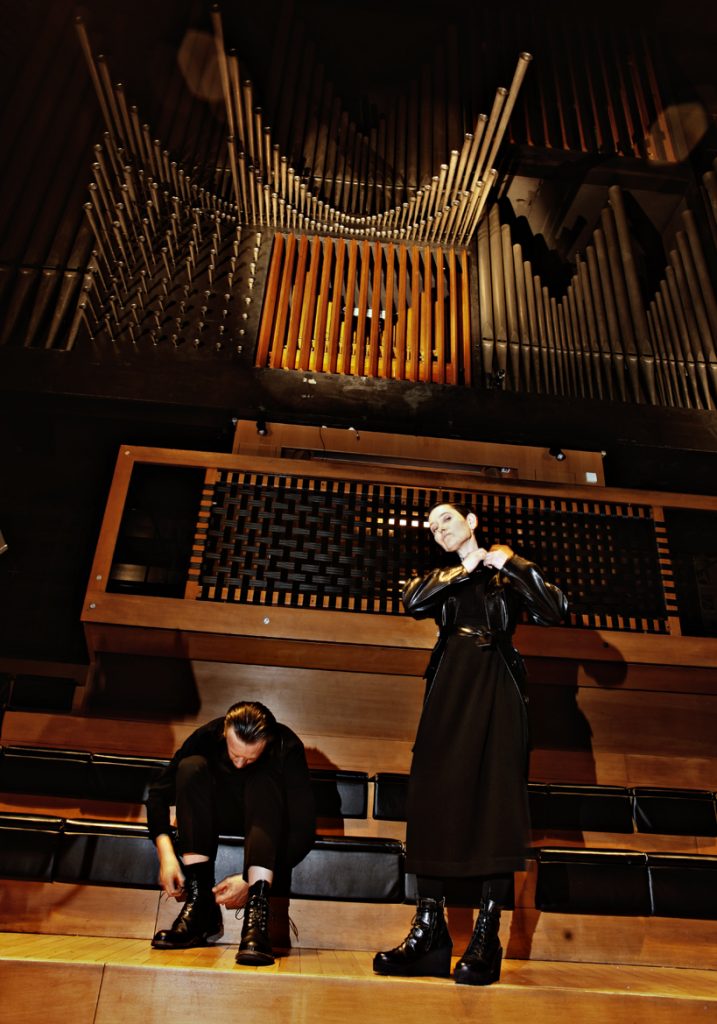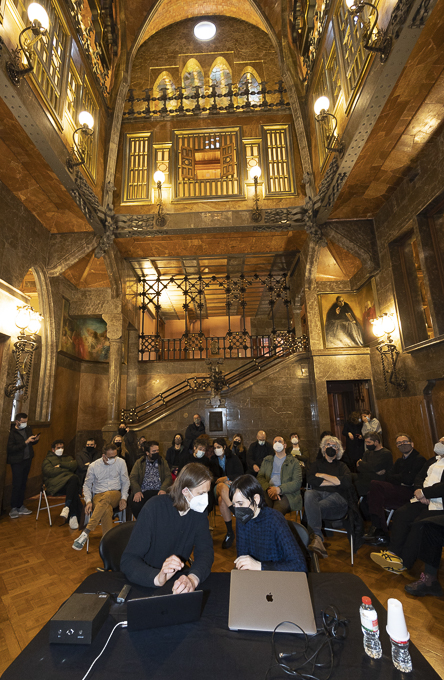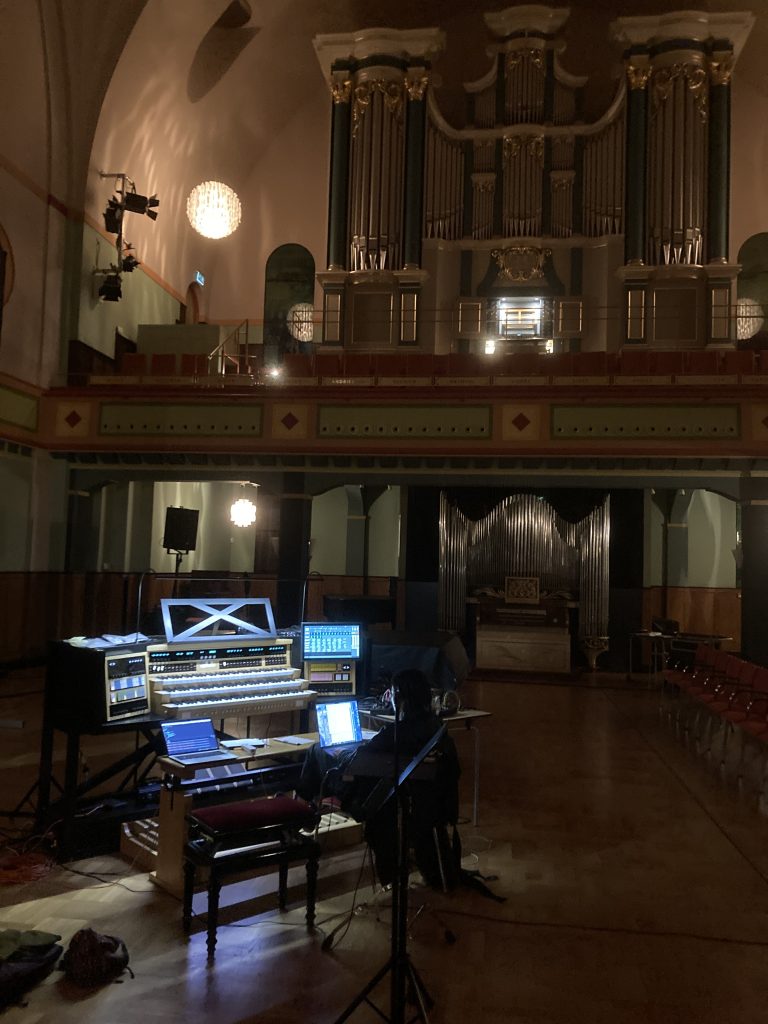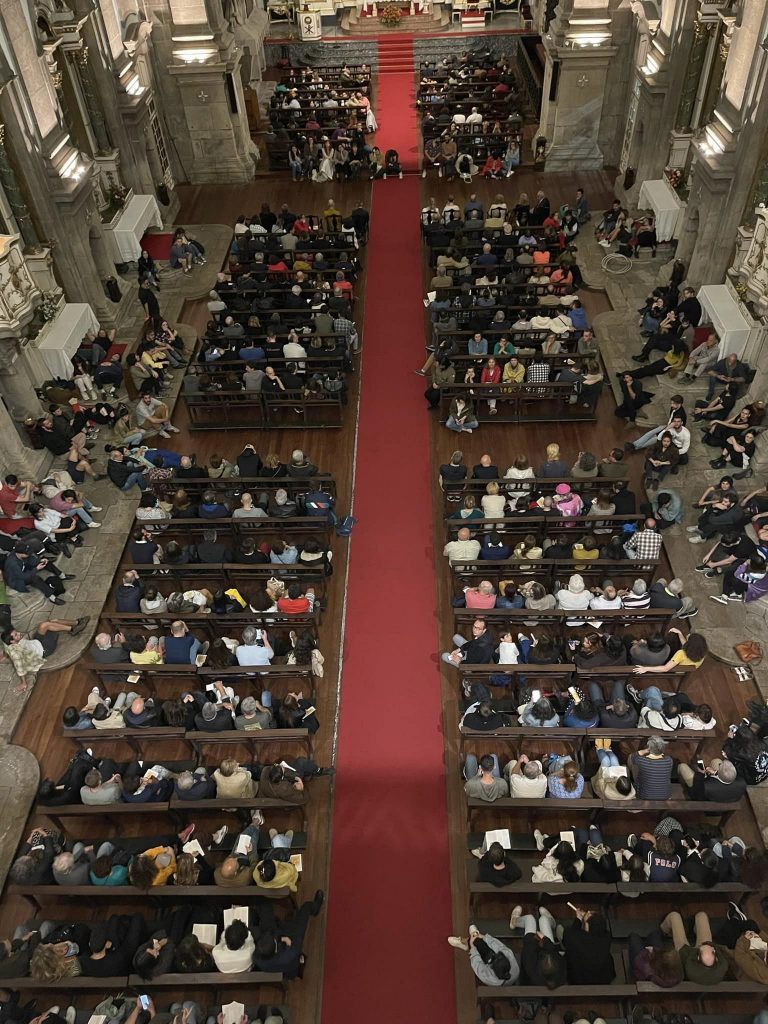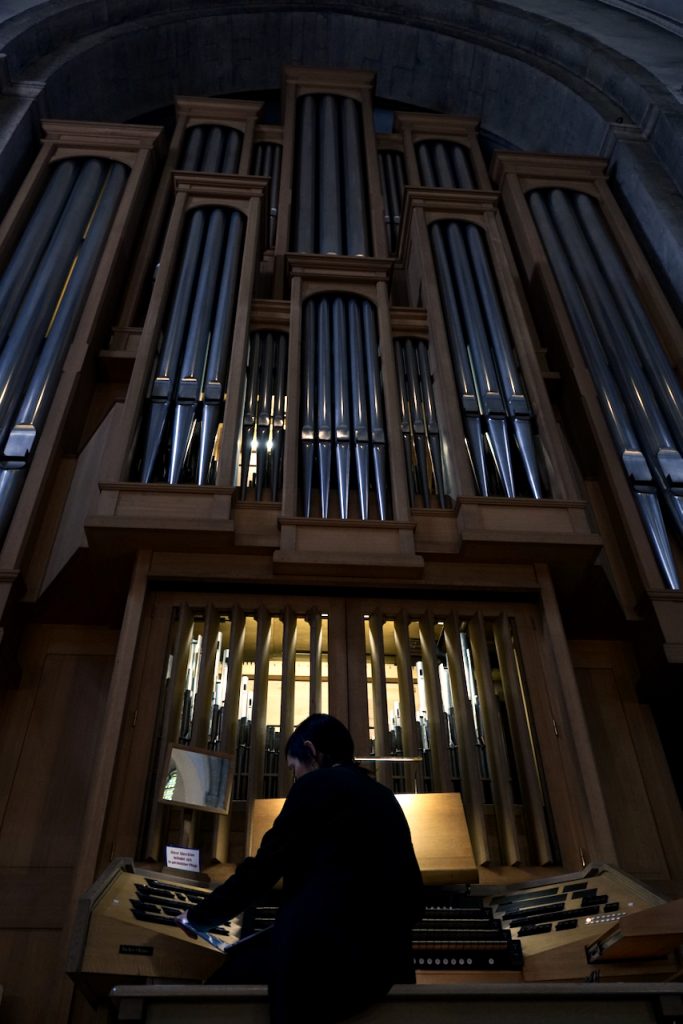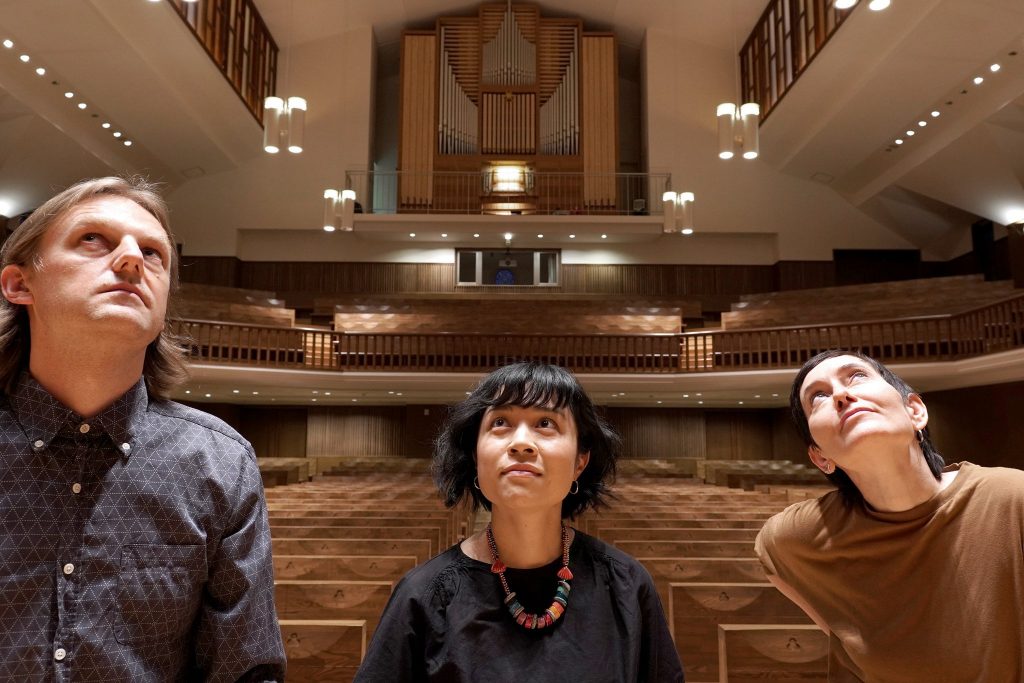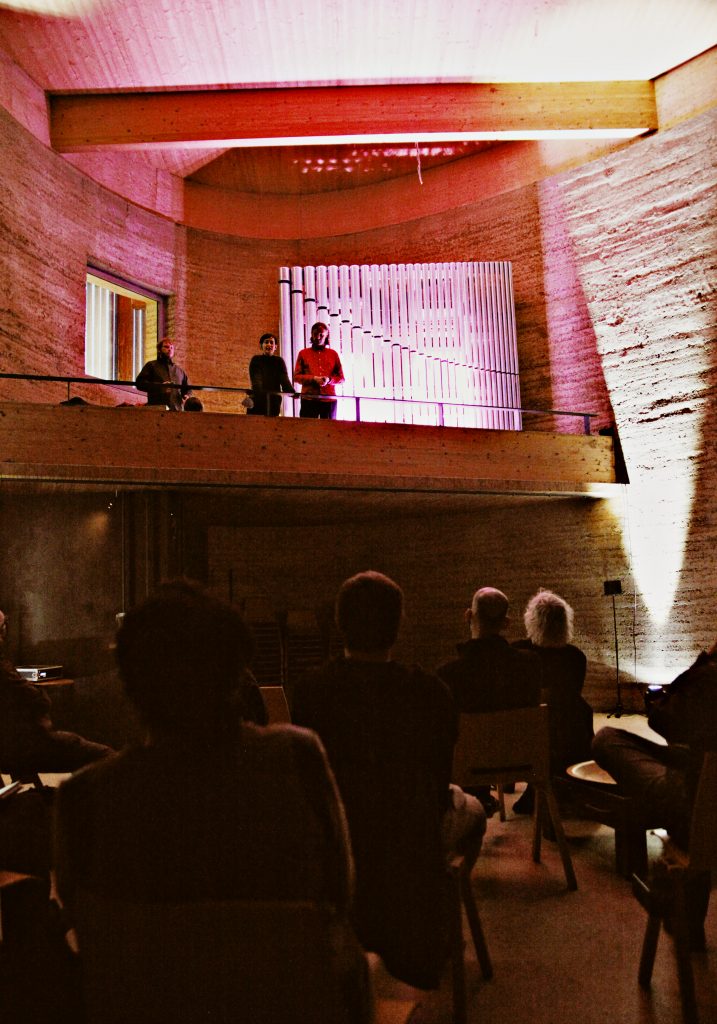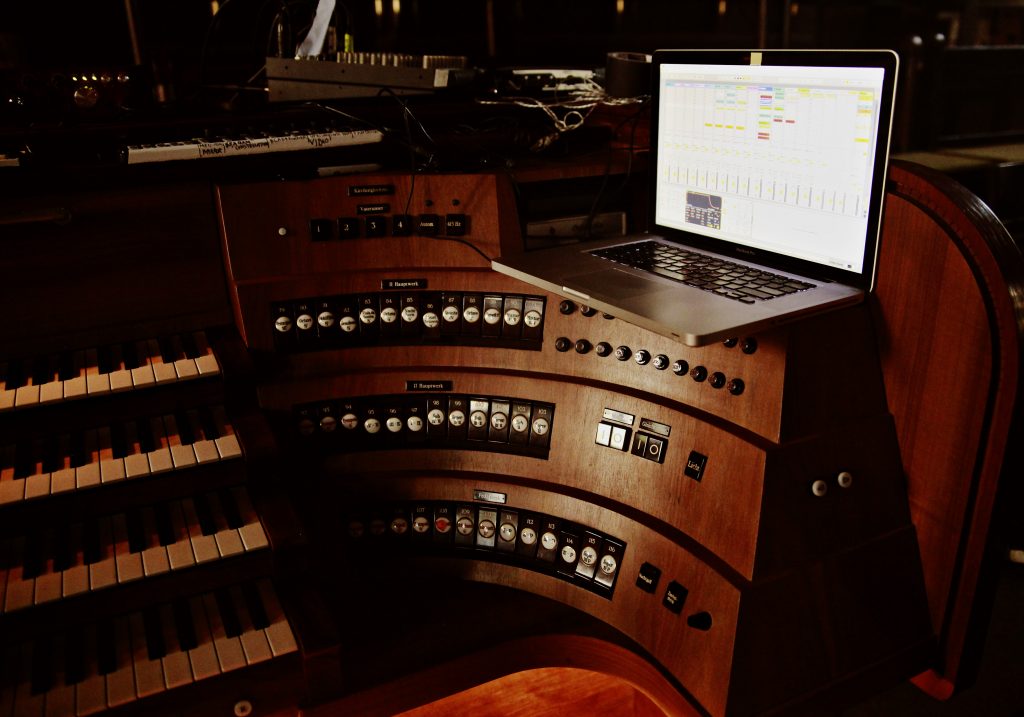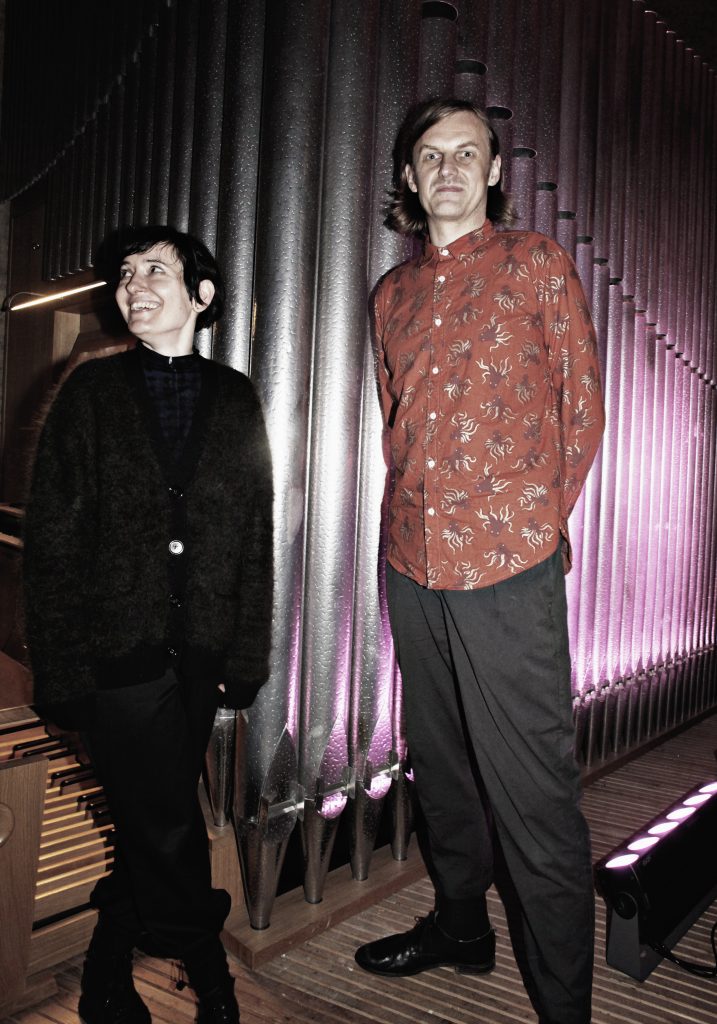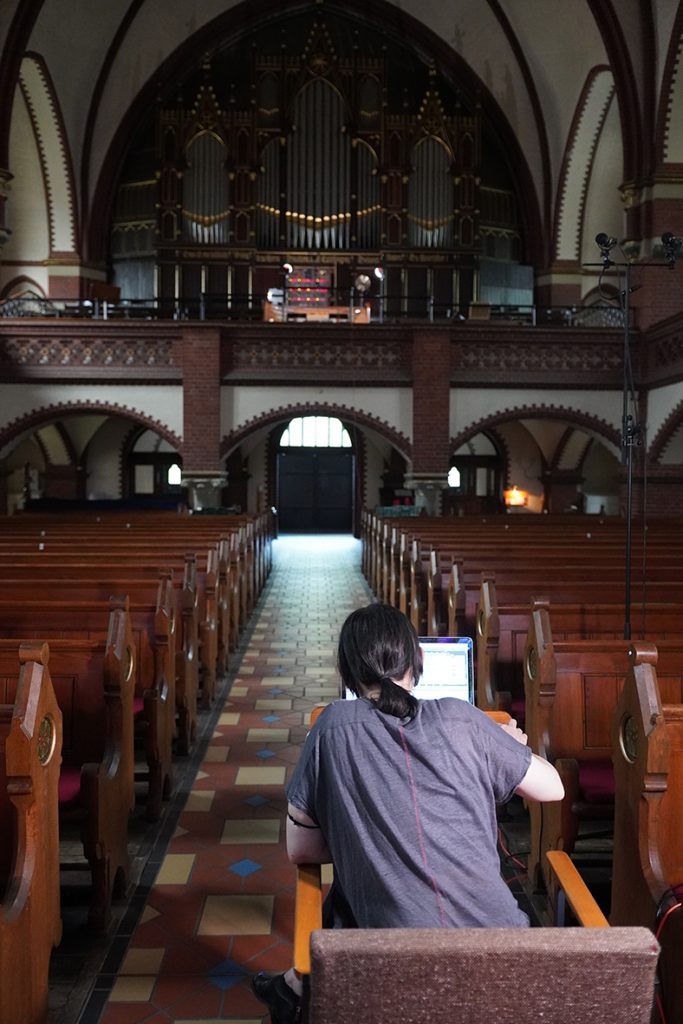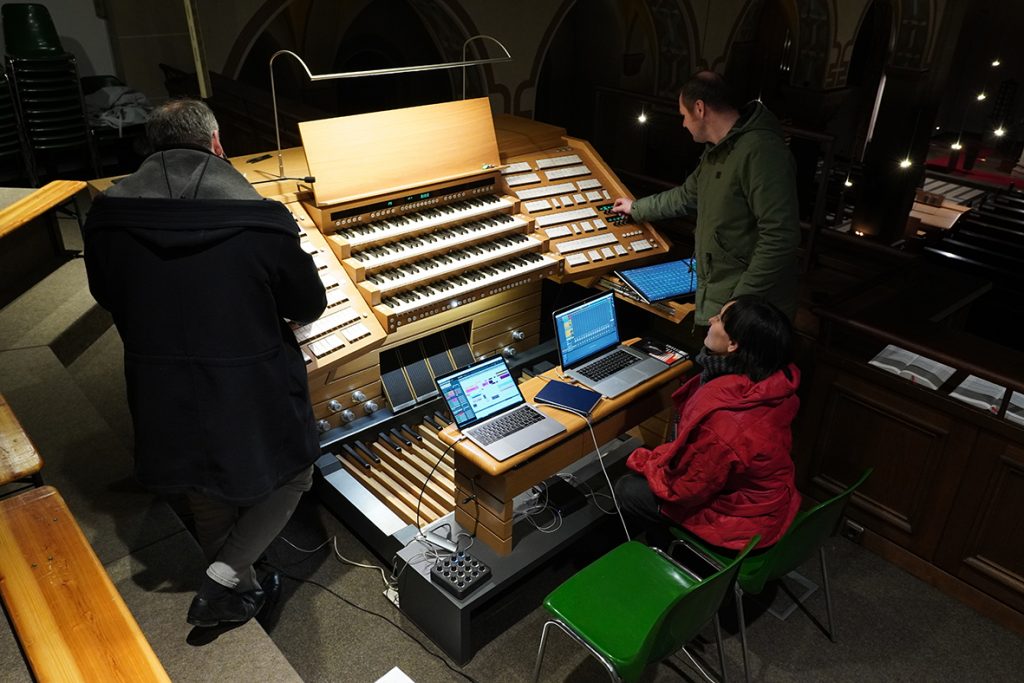AGGREGAT #11 for Hyperorgan (2022)
AGGREGATE is a growing number of pieces by gamut inc exploring the possibilities of algorithmic composition for organ. Some organs can be controlled by computer via a MIDI interface. This automation of the instrument opens up the possibility for compositions that could not otherwise be played by human hands, it brings the machine-like side of the organ to the fore and makes it seem like a synthesiser.
While a variety of sounds can be synthesised on the organ through registration—i.e. selecting various combinations of stops—the instrument is built with a non-dynamic key action, meaning the notes always sound at a constant volume as defined by the respective stops and the wind strength. Volume can be varied by means of the swell box shutters, but not separately for each individual note. If the organ were a synthesiser, then it would be one in which attack and decay is defined and fixed by the way the pipes are constructed. However, various attacks and decays can be simulated with extremely short repeating notes that gradual become longer or shorter. It is not possible for a musician to play these notes, but they can be programmed and played back by controlling the organ by computer. It is these whirring and fluttering notes, shimmering masses as well as automated stop changes in particular that we investigate in the AGGREGATE series.
full version recorded at Kaiser-Wilhelm Gedächtniskirche 2022 by Antonio Pulli
composed 2022 by gamut inc during a 3-month residency at Villa Kamogawa in Kyoto, Japan
performed in Paris (St Esprit), Porto (Igreja da Lapa @ Serralves em Fiesta festival), Berlin (KWG), Cologne (St. Aposteln @ Romanischer Sommer Festival), Stavanger Concert House, Barcelona (Palau Güell @ Sónar Festival)
AGGREGAT #10 : Breathtaking for Hyperorgan (2021)
performed and recorded at Orgelpark Amsterdam using the automated Utopa organ (system SINUA)
This piece makes extended use of automated register changes
Aggregat #4 (2018)
recorded live at Auenkirche Berlin on the 21st of April 2018 by Paul Paulun,
photos: Christoph Voy
